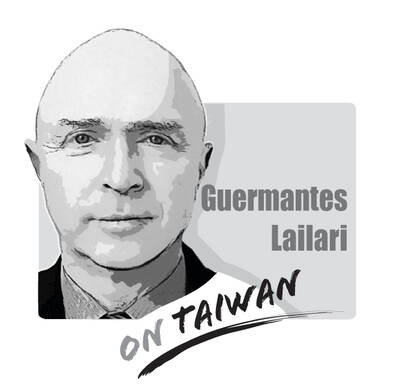It is perhaps counterintuitive that the US would orchestrate a mass naval exercise based in Hawaii, including the participation — this year — of 28 other nations, and say that the intention is to maintain regional peace.
While the Rim of the Pacific (RIMPAC) exercises include activities centered on humanitarian aid and disaster relief, it is hard to escape the fact that the predominant component is military in nature, including testing of weapons and promotion of interoperability of the armed forces of nations that do not usually have such opportunities.
With the arrival of the USS Carl Vinson, a Baden-Wurttemberg-class frigate of the German Navy and the JS Kunisaki, a Japan Maritime Self-Defense Force Osumi-class tank landing ship, at Pearl Harbor, and plans to sink the USS Tarawa, a decommissioned amphibious assault ship — the largest vessel to be used in the regular sink exercise component of RIMPAC in more than a decade — it is clear that the US means business with this year’s event.
The list of participating units — 40 surface ships, three submarines, 150 fighter jets, 14 land-based armed forces and 25,000 personnel — over the two-month program running from Thursday last week through Aug. 1 speaks to the scale and ambition of the exercises, as does the nature of the nations taking part. RIMPAC this year includes Pacific Rim nations such as Australia, Canada, Chile, Colombia, Ecuador, Japan, Mexico, New Zealand, South Korea and the US, in addition to Brunei, Indonesia, Malaysia, Philippines, Singapore and Thailand. This last group represents six of the 10 members of ASEAN.
Other participating states from beyond the Pacific Rim, but with an interest in increasing their presence and the maintenance of peace in the Indo-Pacific region, are Belgium, Denmark, France, Germany, India, Italy, the Netherlands and the UK.
However, China was not invited this year. It was asked to attend the 2014 and the 2016 exercises, but not to subsequent events due to the Chinese Communist Party’s (CCP) reluctance to adhere to international rules or norms and standards. The US does not mention China by name as the cause for international concern that puts it front and center of the military exercises, but the name hardly needs to be said.
China’s state-backed Global Times noticed the elephant in the room and the meaning behind the planned sinking of the Tarawa, in an editorial on Thursday last week brushing off the US as a “paper tiger” and RIMPAC as a “muscle show,” and insisting that the Chinese People’s Liberation Army Navy would not be impressed or intimidated.
It also accused the US of “poisoning ... the peaceful atmosphere in the Asia-Pacific region” through the exercises.
The accusation that any country other than China was “poisoning the peaceful atmosphere” of the region is pure projection and a repeat of similar attempts by Chinese Minister of National Defense Dong Jun (董軍) at the Shangri-La Dialogue defense forum in Singapore from May 31 to June 2. In his comments at the forum, Dong tried to persuade his audience that the US should withdraw from the region and that ASEAN should play a more central role.
What the Global Times’ editorial fails to recognize is that RIMPAC is not so much a show of force by one country, but a show of concern by all participating nations, including the ASEAN members, who would be happy for China to join in, but understand that it is the very country that makes the military nature of the exercises so necessary.
Congratulations to China’s working class — they have officially entered the “Livestock Feed 2.0” era. While others are still researching how to achieve healthy and balanced diets, China has already evolved to the point where it does not matter whether you are actually eating food, as long as you can swallow it. There is no need for cooking, chewing or making decisions — just tear open a package, add some hot water and in a short three minutes you have something that can keep you alive for at least another six hours. This is not science fiction — it is reality.

A foreign colleague of mine asked me recently, “What is a safe distance from potential People’s Liberation Army (PLA) Rocket Force’s (PLARF) Taiwan targets?” This article will answer this question and help people living in Taiwan have a deeper understanding of the threat. Why is it important to understand PLA/PLARF targeting strategy? According to RAND analysis, the PLA’s “systems destruction warfare” focuses on crippling an adversary’s operational system by targeting its networks, especially leadership, command and control (C2) nodes, sensors, and information hubs. Admiral Samuel Paparo, commander of US Indo-Pacific Command, noted in his 15 May 2025 Sedona Forum keynote speech that, as
In a world increasingly defined by unpredictability, two actors stand out as islands of stability: Europe and Taiwan. One, a sprawling union of democracies, but under immense pressure, grappling with a geopolitical reality it was not originally designed for. The other, a vibrant, resilient democracy thriving as a technological global leader, but living under a growing existential threat. In response to rising uncertainties, they are both seeking resilience and learning to better position themselves. It is now time they recognize each other not just as partners of convenience, but as strategic and indispensable lifelines. The US, long seen as the anchor
Kinmen County’s political geography is provocative in and of itself. A pair of islets running up abreast the Chinese mainland, just 20 minutes by ferry from the Chinese city of Xiamen, Kinmen remains under the Taiwanese government’s control, after China’s failed invasion attempt in 1949. The provocative nature of Kinmen’s existence, along with the Matsu Islands off the coast of China’s Fuzhou City, has led to no shortage of outrageous takes and analyses in foreign media either fearmongering of a Chinese invasion or using these accidents of history to somehow understand Taiwan. Every few months a foreign reporter goes to